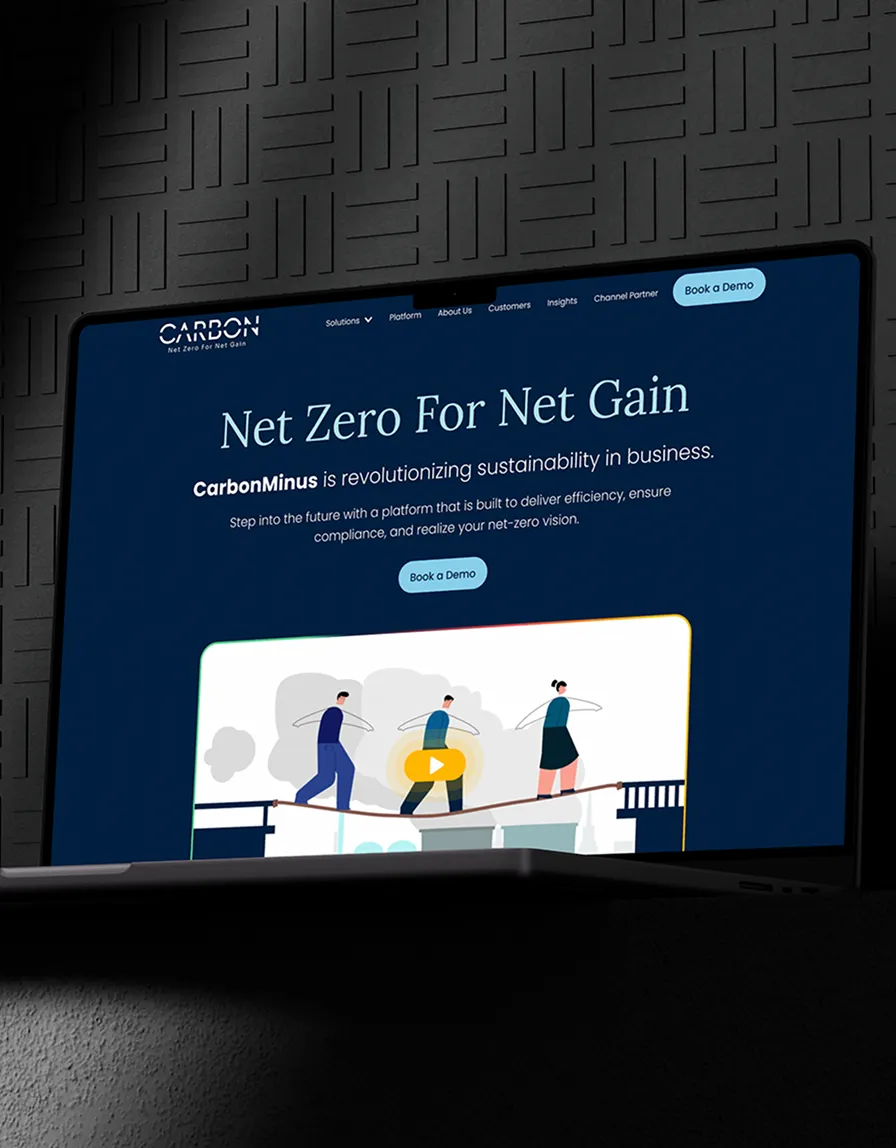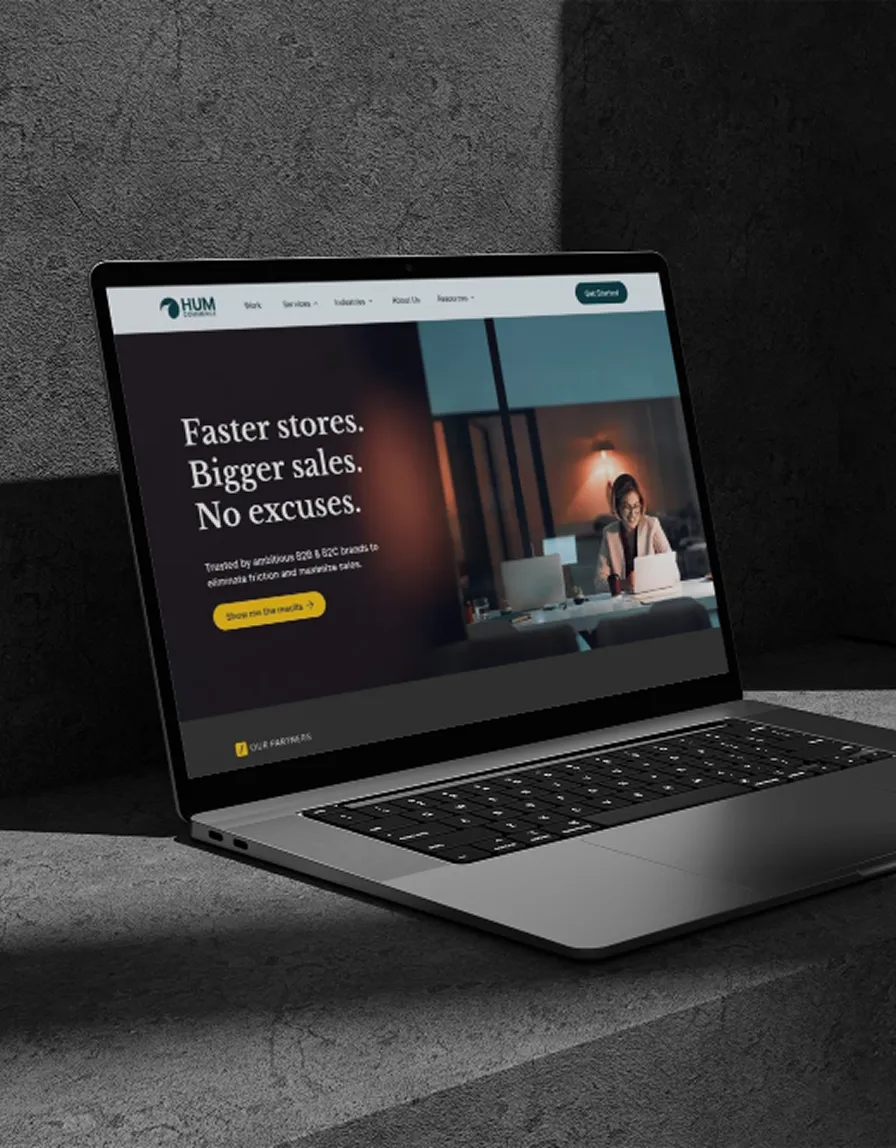The brands that win loyalty will win everything else.












































































































































Product experience and emotional resonance
Community as a moat, not just a channel
Price-insensitive audiences built on trust and perceived value
Viral mechanics embedded into product design
Paid acquisition treadmill with no loyalty loop
Transactional UX without narrative pull
Engagement drop-offs after onboarding
Constant pricing pressure from copycats and freemium traps







You’ve built something people love to use. Now let’s make them love it enough to pay, stay, and spread the word. Whether you're scaling freemium into premium, converting users into evangelists, or preparing for platform expansion, we help you grow not just downloads—but desire.
Your growth is only as sustainable as your story.


Forge emotional connection, not just functional clarity.
Storylines that resonate across lifestyle and life stage
Identity-aligned content and tone
Values-based messaging for long-term affinity

Move from attention to action seamlessly.
Trial-to-subscription UX optimization
High-converting pricing and value communication
Contextual nudges across the funnel

Design your product and marketing to compound over time.
Viral loops embedded in user workflows
Social proof mechanics at every stage
Share-worthy experiences aligned with utility

Predict, prevent, and personalize at scale.
Behavior-driven retention triggers
LTV segmentation with real-time cohort modeling
Predictive churn scoring + win-back automations













B2C SaaS marketing requires fundamentally different approaches than B2B. While B2B focuses on multi-stakeholder committee decisions and business value, consumer SaaS thrives on:
· Emotional connection rather than purely rational ROI
· Individual decision-making versus committee consensus
· Visual demonstration over detailed specification
· Simplified messaging instead of technical depth
· Immediate value delivery versus long implementation cycles
The most effective B2C SaaS marketing creates intuitive, visually compelling experiences that convey value without requiring technical understanding, addresses personal rather than business pain points, and supports fast decision cycles with streamlined conversion paths.
The most effective acquisition strategy combines push and pull mechanisms across the consideration journey:
· Top-funnel: Social-first content designed for discovery and shareability
· Mid-funnel: Interactive demonstrations that showcase personal value
· Bottom-funnel: Frictionless trials with clear activation pathways
Unlike enterprise SaaS that relies heavily on relationship development, consumer SaaS thrives on creating viral discovery loops, optimizing for mobile-first experiences, and removing every possible barrier to initial adoption. The winning approach balances brand awareness with performance marketing rather than leaning too heavily toward either extreme.
Consumer SaaS pricing requires careful psychological calibration:
· Tiered structures that create clear upgrade paths
· Feature bundling that aligns with different user personas
· Strategic free plans that convert to paid through quality limitations
· Transparent annual discounting to improve retention
The most successful approaches focus on perceived value rather than cost-based pricing, implementing what we call "value walls" instead of paywalls—ensuring free users experience enough value to understand the product while encountering meaningful
limitations that justify payment. This balanced approach typically drives higher conversion rates than either fully-gated or overly-generous freemium models.
For B2C SaaS, design isn't decorative—it's existential. Consumer expectations have been shaped by best-in-class experiences from companies like Apple, Spotify, and Instagram. The design must:
· Create immediate intuitive understanding without tutorials
· Deliver emotional satisfaction beyond mere functionality
· Support one-handed mobile interaction
· Provide immediate value within seconds of first use
· Encourage habitual engagement through thoughtful interaction patterns
Unlike enterprise software where users might tolerate complexity for business value, consumer SaaS lives and dies by first impression and ongoing engagement quality. Design must be considered a core strategic function rather than an execution detail.
Effective B2C SaaS content strategy follows different principles than traditional business software:
· Visual storytelling over technical documentation
· Use case vignettes rather than comprehensive case studies
· Lifestyle integration rather than business process focus
· User community creation rather than centralized thought leadership
· Short-form engagement over long-form depth
The most sophisticated approaches create content ecosystems that support both discovery (shareable, emotional, visual) and validation (practical, specific, outcome-focused),
recognizing that consumer decisions balance emotional and rational factors in compressed timeframes.
Consumer subscription retention requires systematic approaches across multiple dimensions:
· Onboarding experiences that drive early habit formation
· Engagement loops that create regular usage patterns
· Progress visualization that demonstrates accumulated value
· Community integration that increases switching costs
· Strategic pricing that reduces cancellation incentives
The most effective retention programs focus on what we call "positive friction"—making cancellation emotionally unattractive rather than administratively difficult. This approach preserves brand relationship even when users cancel, increasing reactivation potential while avoiding dark patterns that damage trust.
Beyond traditional sales metrics, sophisticated consumer SaaS teams track engagement and momentum indicators:
· Activation rate (users who complete key value-experiencing actions)
· Time to value (how quickly users experience core benefits)
· Engagement depth (sessions, features used, content consumed)
· Viral coefficient (organic sharing and referral metrics)
· Churn predictors (engagement drops indicating future cancellation risk)
These leading indicators reveal marketing effectiveness beyond acquisition alone, connecting marketing activities to the full user lifecycle and creating shared accountability between marketing, product, and customer success.
Breaking through in crowded categories requires strategic positioning rather than feature differentiation:
· Focusing on specific user identities rather than generic use cases
· Creating distinctive language that reshapes category perception
· Owning emotional territory beyond functional benefits
· Cultivating brand communities that transcend product usage
The most successful approach often narrows your initial appeal while deepening resonance with specific audiences—creating passionate advocates rather than casual users. This focused approach builds momentum through concentrated impact rather than diluting efforts across broad, undifferentiated audiences.
The most effective consumer SaaS companies integrate these approaches rather than choosing between them:
· Product creates inherent growth mechanisms through sharing and network effects
· Marketing amplifies organic growth rather than compensating for product limitations
· Integrated teams collaborate on activation and engagement strategies
· Shared metrics connect product and marketing performance
Rather than separating these functions, leading companies build growth loops where marketing attracts users, the product converts and retains them, and user advocacy creates more marketing opportunities. This virtuous cycle dramatically improves CAC efficiency compared to siloed approaches.
For consumer SaaS, mobile isn't just another channel—it's often the primary experience:
· Mobile-first design that optimizes for limited attention spans
· Push notification strategies that drive re-engagement
· App store optimization as a critical acquisition channel
· Mobile payment integration for frictionless conversion
· Social sharing mechanisms built directly into the experience
While enterprise SaaS can sometimes succeed with desktop-first approaches, consumer products typically require seamless mobile experiences. The most effective strategies design for mobile constraints first, then expand to larger screens rather than retrofitting desktop experiences to smaller formats.
Freemium success depends on striking the perfect balance between value delivery and limitation:
· Providing complete core functionality with volume or capability restrictions
· Creating natural upgrade moments within the user journey
· Implementing social features that incentivize paid conversion
· Developing content strategies that onboard free users while showcasing premium value
The most sophisticated approach treats the free experience as a marketing channel itself—focusing on activation quality rather than mere signup volume and designing in-product education that naturally leads users toward paid features that solve emerging needs.
Effective social strategies for consumer SaaS transcend basic promotion:
· Platform-specific content that respects each channel's native behavior
· Community building rather than broadcast messaging
· User-generated content programs that showcase authentic experiences
· Social listening for product development insights, not just sentiment tracking
· Creative development optimized for participation, not just consumption
The most successful programs recognize that social media isn't just an advertising channel but a product experience extension—building communities that create value beyond the core software offering while providing organic acquisition opportunities.
While enterprise SaaS can sometimes succeed through pure performance marketing, consumer products typically require brand investment for sustainable growth:
· Brand creates preference that lowers acquisition costs
· Performance marketing provides immediate growth and testing feedback
· Combined approaches create defensibility against competitors
The optimal balance typically shifts over time—with performance-led acquisition providing early traction while brand investments create growing efficiency and defensibility as the market matures. Companies that integrate both from the beginning typically achieve more sustainable growth than those focused exclusively on either approach.
Consumer SaaS often serves multiple user types with different needs and motivations:
· Segment-specific landing pages that speak to distinct use cases
· Personalized onboarding flows based on initial behavior signals
· Adaptive messaging that evolves as usage patterns emerge
· Progressive profiling that refines persona understanding over time
The most sophisticated approaches create what we call "adaptive journeys" that begin with broad persona hypotheses but continuously refine based on actual behavior, creating increasingly personalized experiences without requiring explicit user input that creates friction.
The most successful B2C SaaS landing pages follow different principles than enterprise solutions:
· Visual demonstration over textual explanation
· Immediate value articulation within seconds of arrival
· Social proof featuring relatable individuals, not logos
· Simplified sign-up requiring minimal commitment
· Mobile optimization for on-the-go discovery
Rather than comprehensive feature explanation, effective consumer landing pages create immediate emotional connection and clear benefit visualization followed by frictionless trial initiation. This approach recognizes that consumer decisions happen quickly and are often driven by emotional rather than purely rational factors.
Consumer SaaS content requires different approaches than business software:
· Lifestyle integration showing how the product fits daily routines
· Visual formats including short video and infographics
· User stories featuring relatable situations, not business outcomes
· Distribution strategies emphasizing social and community channels
· Interactive tools that provide immediate value without full product adoption
The most effective content strategies balance aspiration with practicality—showing an improved future state while providing immediately applicable insights, creating both emotional connection and practical validation in the consideration process.
Strategic data utilization creates personalized experiences without crossing privacy boundaries:
· Behavior-based segmentation that infers needs without asking
· Predictive engagement models identifying optimal contact timing
· Feature recommendation engines based on usage patterns
· Churn prevention triggered by engagement changes
· Lookalike modeling to find prospects similar to best customers
The most sophisticated approaches balance personalization benefits with privacy respect, creating what we call "earned personalization"—where data use clearly benefits users rather than just optimizing conversion, building trust while improving marketing effectiveness.
The privacy landscape has fundamentally altered consumer acquisition strategies:
· Attribution has become probabilistic rather than deterministic
· Customer acquisition costs have increased for many channels
· First-party data has become increasingly valuable
· Content and brand have regained importance vs. pure targeting
Successful companies have adapted through diversified channel strategies, improved onboarding to maximize first-party data collection, and increased focus on organic discovery mechanisms. The most effective approach combines technical solutions with strategic shifts—viewing privacy changes as an opportunity to build more sustainable acquisition systems rather than merely a challenge to overcome.
Effective B2C SaaS marketing organizations typically include:
· Growth product managers bridging marketing and product
· Creative developers building interactive marketing experiences
· Community managers cultivating user engagement
· Data scientists identifying behavioral patterns and opportunities
· Channel specialists optimizing specific acquisition sources
Unlike enterprise marketing teams that might separate brand and demand generation, consumer SaaS organizations benefit from integrated teams that share metrics and collaborate across the full user journey. This integration recognizes that acquisition, activation, retention, and referral are deeply interconnected in consumer products.
Generative AI is transforming consumer SaaS marketing across multiple dimensions:
· Content creation that enables personalization at scale
· Conversational interfaces that enhance customer service
· Predictive analytics that anticipate user needs and behaviors
· Creative development that accelerates testing velocity
The most strategic approach views AI as both a marketing tool and a potential product differentiator—recognizing that while AI can enhance marketing operations, its greatest impact often comes through integration into the product experience itself, creating capabilities that reshape category expectations and user value perception.

